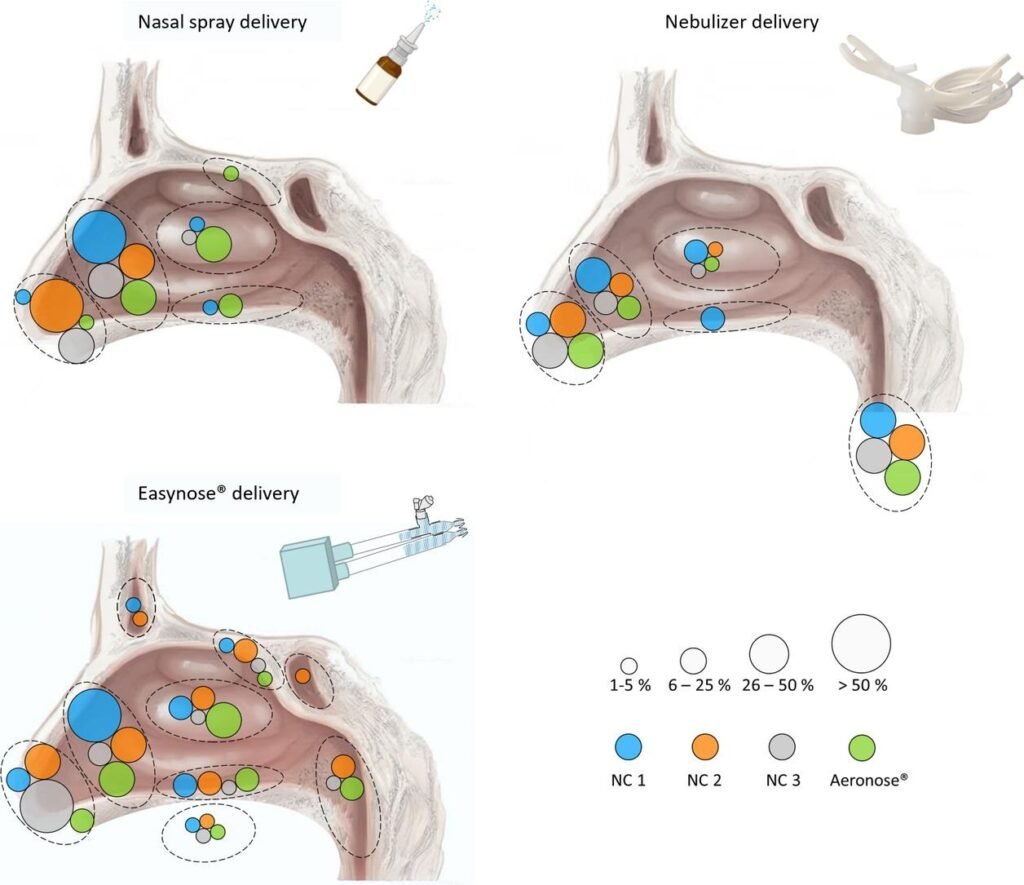Mike Pasteur, Guillaume Arsouze, Guy Ilango, Déborah Le Pennec ,Dimitri Kulker, Anaïs Heyraud, Jean-Philippe Cottier, Charles Aussedat, Nathalie Heuzé-Vourc’h, Virginie Hervé, Sandrine Le Guellec
Anatomical 3D-printed nasal casts are valuable models to investigate intranasal drug deposition, providing preclinical data that cannot be obtained in animal models. However, these models are limited since they are often derived from a single patient or represent a mean of several groups.
The present study aimed to better characterize the anatomical differences of the nasal cavity in a European sub-population and to assess the potential impact of anatomical variations on intranasal deposition by medical devices. Ninety-eight cranial computed tomography scans of patients were selected and analyzed in 2D and 3D conformations.
They showed symmetry of cavities and a high level of heterogeneity of measurements, especially volume and area, in the population. Three anatomical groups with distinct nasal geometry were identified and 3D nasal casts of the most representative patient of each group were printed.
Fluorescein was administered using three medical devices: a nasal spray, a sonic jet nebulizer and a prototype mesh-nebulizer. The deposition profiles were compared with the Aeronose® as a reference. Our results show that anatomical variations influenced the deposition profiles depending on the device, with a higher variation with spray and the mesh-nebulizer.
This work emphasises the importance of anatomical parameters on drug intranasal deposition and the need to evaluate inhaled drugs on different 3D nasal casts reflecting the target population.
Full text available on : ScienceDirect


